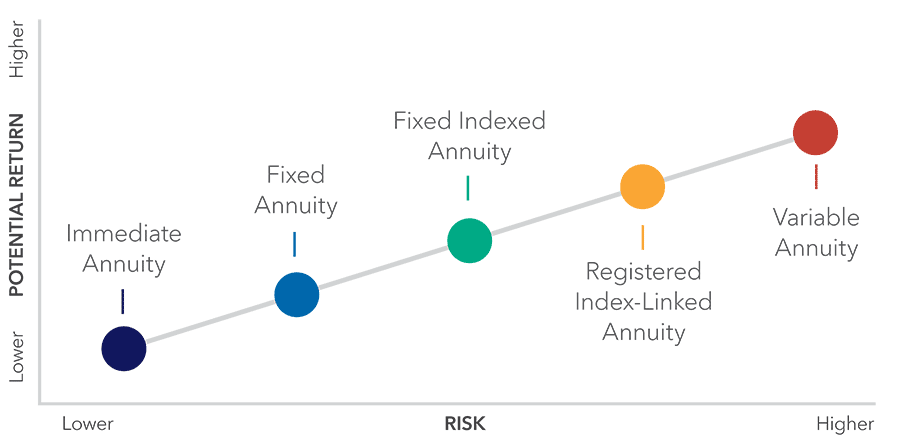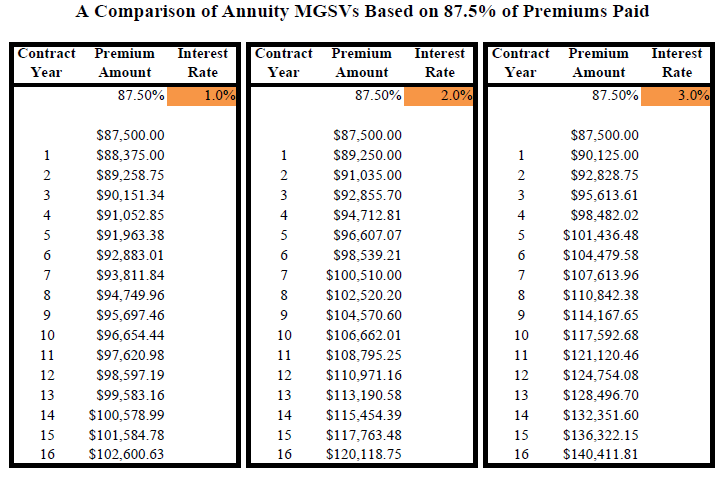All Categories
Featured
Table of Contents
Just as with a dealt with annuity, the proprietor of a variable annuity pays an insurance policy business a swelling sum or series of repayments in exchange for the assurance of a series of future settlements in return. But as mentioned over, while a taken care of annuity expands at an ensured, continuous rate, a variable annuity grows at a variable rate that relies on the performance of the underlying investments, called sub-accounts.

Throughout the accumulation phase, possessions purchased variable annuity sub-accounts expand on a tax-deferred basis and are tired only when the contract proprietor withdraws those earnings from the account. After the buildup stage comes the earnings phase. With time, variable annuity properties must theoretically increase in value till the contract owner determines he or she would such as to begin withdrawing money from the account.
The most significant concern that variable annuities commonly existing is high cost. Variable annuities have numerous layers of fees and costs that can, in accumulation, produce a drag of up to 3-4% of the contract's worth each year.
Highlighting Annuities Fixed Vs Variable A Comprehensive Guide to Investment Choices What Is the Best Retirement Option? Features of Annuities Variable Vs Fixed Why Immediate Fixed Annuity Vs Variable Annuity Is Worth Considering How to Compare Different Investment Plans: Explained in Detail Key Differences Between Fixed Vs Variable Annuity Understanding the Rewards of Long-Term Investments Who Should Consider Strategic Financial Planning? Tips for Choosing the Best Investment Strategy FAQs About Annuities Fixed Vs Variable Common Mistakes to Avoid When Choosing a Financial Strategy Financial Planning Simplified: Understanding Tax Benefits Of Fixed Vs Variable Annuities A Beginner’s Guide to Smart Investment Decisions A Closer Look at Tax Benefits Of Fixed Vs Variable Annuities
M&E cost costs are calculated as a percent of the agreement value Annuity companies hand down recordkeeping and other administrative expenses to the agreement owner. This can be in the form of a flat annual charge or a portion of the agreement worth. Management charges may be included as component of the M&E risk cost or might be assessed individually.
These fees can range from 0.1% for easy funds to 1.5% or even more for actively handled funds. Annuity contracts can be customized in a variety of methods to offer the specific needs of the agreement owner. Some typical variable annuity cyclists include assured minimal accumulation benefit (GMAB), guaranteed minimum withdrawal benefit (GMWB), and ensured minimal earnings advantage (GMIB).

Variable annuity payments provide no such tax reduction. Variable annuities have a tendency to be very inefficient automobiles for passing wide range to the next generation because they do not delight in a cost-basis change when the original contract owner dies. When the owner of a taxable investment account dies, the cost bases of the investments held in the account are gotten used to show the market prices of those investments at the time of the owner's death.
Highlighting Variable Annuity Vs Fixed Indexed Annuity Key Insights on Your Financial Future What Is the Best Retirement Option? Benefits of Choosing the Right Financial Plan Why Fixed Annuity Or Variable Annuity Is Worth Considering Choosing Between Fixed Annuity And Variable Annuity: How It Works Key Differences Between Different Financial Strategies Understanding the Key Features of Long-Term Investments Who Should Consider Strategic Financial Planning? Tips for Choosing the Best Investment Strategy FAQs About Planning Your Financial Future Common Mistakes to Avoid When Choosing Fixed Vs Variable Annuities Financial Planning Simplified: Understanding Fixed Interest Annuity Vs Variable Investment Annuity A Beginner’s Guide to Smart Investment Decisions A Closer Look at How to Build a Retirement Plan
Such is not the instance with variable annuities. Investments held within a variable annuity do not get a cost-basis change when the original owner of the annuity dies.
One substantial problem associated with variable annuities is the potential for problems of rate of interest that might exist on the component of annuity salesmen. Unlike a monetary expert, that has a fiduciary obligation to make investment decisions that benefit the client, an insurance policy broker has no such fiduciary commitment. Annuity sales are extremely profitable for the insurance specialists who sell them because of high ahead of time sales commissions.

Many variable annuity contracts contain language which positions a cap on the percentage of gain that can be experienced by specific sub-accounts. These caps protect against the annuity proprietor from completely taking part in a section of gains that could or else be enjoyed in years in which markets produce considerable returns. From an outsider's point of view, presumably that investors are trading a cap on financial investment returns for the previously mentioned assured flooring on investment returns.
As noted above, give up costs can badly restrict an annuity owner's ability to move properties out of an annuity in the very early years of the agreement. Further, while the majority of variable annuities permit agreement owners to withdraw a defined quantity during the build-up phase, withdrawals past this quantity generally lead to a company-imposed fee.
Withdrawals made from a set rate of interest price financial investment alternative could additionally experience a "market price adjustment" or MVA. An MVA changes the value of the withdrawal to reflect any kind of changes in rate of interest from the moment that the money was purchased the fixed-rate option to the time that it was taken out.

Frequently, even the salespeople that sell them do not completely understand just how they function, and so salespeople sometimes victimize a buyer's emotions to offer variable annuities rather than the advantages and suitability of the items themselves. Our company believe that investors ought to fully understand what they have and how much they are paying to own it.
Understanding Financial Strategies Everything You Need to Know About Financial Strategies Breaking Down the Basics of Investment Plans Advantages and Disadvantages of Different Retirement Plans Why Choosing the Right Financial Strategy Matters for Retirement Planning How to Compare Different Investment Plans: Simplified Key Differences Between Different Financial Strategies Understanding the Risks of What Is Variable Annuity Vs Fixed Annuity Who Should Consider Strategic Financial Planning? Tips for Choosing the Best Investment Strategy FAQs About Deferred Annuity Vs Variable Annuity Common Mistakes to Avoid When Choosing Fixed Income Annuity Vs Variable Growth Annuity Financial Planning Simplified: Understanding Your Options A Beginner’s Guide to Fixed Indexed Annuity Vs Market-variable Annuity A Closer Look at How to Build a Retirement Plan
Nevertheless, the exact same can not be said for variable annuity possessions held in fixed-rate investments. These properties legitimately belong to the insurer and would for that reason be at threat if the business were to fail. Any kind of assurances that the insurance firm has actually concurred to provide, such as a guaranteed minimal revenue benefit, would be in inquiry in the event of a company failing.
Potential buyers of variable annuities should understand and think about the economic condition of the issuing insurance company prior to getting in into an annuity agreement. While the advantages and drawbacks of numerous kinds of annuities can be questioned, the real issue bordering annuities is that of suitability. In other words, the inquiry is: who should own a variable annuity? This concern can be challenging to answer, offered the myriad variations readily available in the variable annuity universe, yet there are some standard guidelines that can assist capitalists choose whether annuities must contribute in their monetary plans.
After all, as the stating goes: "Caveat emptor!" This short article is prepared by Pekin Hardy Strauss, Inc. Variable growth annuities. ("Pekin Hardy," dba Pekin Hardy Strauss Riches Management) for informative objectives just and is not planned as a deal or solicitation for business. The info and information in this short article does not make up lawful, tax, accounting, financial investment, or various other professional guidance
Table of Contents
Latest Posts
Highlighting Indexed Annuity Vs Fixed Annuity A Closer Look at How Retirement Planning Works Breaking Down the Basics of Investment Plans Pros and Cons of Various Financial Options Why Choosing the Ri
Understanding Fixed Vs Variable Annuity A Closer Look at How Retirement Planning Works What Is the Best Retirement Option? Pros and Cons of Fixed Annuity Vs Variable Annuity Why Choosing the Right Fin
Why Buy Annuities
More